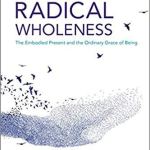One of the most difficult tasks we face is to uncover the hidden assumptions that shape our living and thinking. The reason it’s difficult is found in the history of such assumptions – we have often absorbed them into our psyches while we were too young to question them. The difficulty of uncovering them, though, is offset by its importance: as long as those assumptions lie buried and unseen, they will continue to drive us and shape our actions without ever being held to account.
But how do we shed light on the dark roots of what we know and how we know it? We could start by recognizing that we come to new knowledge by a process of comparison. When we seek to understand something, we don’t start from scratch – we begin by comparing it to other things we already know. And we naturally tend to find such comparisons by turning to the phenomena we understand most thoroughly, rather than to phenomena that leave us puzzled.
Consider this, then: what if there were only one thing in all the world that we understood completely? If we harbored any such absolute understanding, we would naturally lean on it first and foremost, tending to make it the basis for understanding everything else. As it happens, there is just one thing in the world we completely understand, and it is the machine. We understand it because we are its creators. We imagine it, design it and build it. We maintain it, fix it when it breaks, and modify it to improve its performance. Our relationship to the machine is god-like.
Of course the reason we completely understand the machine is because, as its creators, we ourselves establish the parameters for that understanding – and they are very narrow indeed. Simply put, a machine is made to do our bidding. So we are concerned almost exclusively with its specific, limited function, and the way we can achieve that by designing a controlled sequence of cause and effect. Machines have neither the free will, nor the life, to step out of that established sequence of cause and effect. Furthermore, and the impact of this is hard to overestimate, our understanding of machines stands independent of feeling: you can understand the workings of a machine without feeling a thing.
When you examine how our culture sees the world, you begin to see how deeply our seeing relies on the machine model of understanding, asking it to provide the foundation for our understanding of all else. The effect, naturally, tends to mechanize everything, including life – and it is so widespread that it is difficult to summarize. We can gain a glimpse of it, though, by outlining five different but related conclusions the machine model encourages us to make.
 Our understanding of machines invites us to believe that:
Our understanding of machines invites us to believe that:
- The world is knowable. If we can completely understand the machine, we can completely understand anything. You just have to break something down into all its bits and pieces and see how they interact. Everything that happens can be traced back to cause and effect. Such understanding is reliable because it is objective.
- There is no mystery. We know that when you hit a nail directly with a hammer, you will drive it into the wood. Everything happens for a reason. If we encounter something in our lives that looks like a mystery, it might present a minor gap in our understanding, a problem to be cleared up, something we might learn about. Mystery is certainly not a real presence we might learn from – it is an illusion created by the world’s mechanics.
- Life is a machine. Just as with a machine, if you provide a life form with the right energy, it will function as designed. It is essentially a self-replicating machine with inputs and outputs.
- Function is justification. A machine is solely justified by its function, and the same is true of a tree, a chicken, or a mother on welfare. Life counts for very little until we can show that it has a function that provides value.
- Consciousness is a mechanical side-effect. We no more have free will than does a machine – and when we experience consciousness, we are merely experiencing a by-product of the machine. Consciousness certainly can’t be considered a first cause, nor can it be anything more than the machine.
These five conclusions that the machine metaphor encourages us to embrace are all common enough – and they are all misleading. To understand the world according to the limited parameters by which we understand a machine is to impoverish both the world and our lives within it. A tree is not a parametered ‘thing’ like a machine – it is a living process. And the whole of the process that makes up a tree includes not just its roots, but also the soil, rocks, microbes, insects and moisture around those roots. By extension, we would also have to include the plants, climate, topography, geology, lakes, oceans and animals that are part of the processes of the soil, rocks, microbes, insects and moisture that are part of the process of the roots. The sun too is part of the process of the tree, and its process is supported by the process of the galaxy. So the process we identify as a living tree actually implicates and reveals the universe.
A man-made machine is actually unlike anything else in the natural world – and yet it seductively serves as our primary model of understanding. As such, it teaches us that the entire world is a machine, moved in its every particular by the mechanics of cause and effect. When we encounter an effect without a discernable cause, we comfort ourselves by calling it a ‘law.’ Like the Law of Gravity. We imagine gravity as a force – yet a single teacup fills the universe with its gravitational effect. How does the teacup generate that much force? Where does the energy come from? Why doesn’t it run out? Einstein helped us understand that gravity isn’t actually a force – it shows up that way because matter bends space and time. But how does a teacup bend the universe? We don’t know, we just know that it does.
Our god-like relationship to the machine skews our relationships with the living world – but it also skews our personal clarity. For instance, there is a gravity that draws each of our lives forward, and like its namesake it cannot be parsed into cause and effect. The tyranny of the machine model is such that we can easily lose our personal connection to that invisible draw – which, like earth’s gravity, can be felt but not understood. But when we lose touch with the gravity that moves our hearts, our lives lose their compass – and then we are drawn instead by distractions. We shop, we surf the web, we obsess over digital media, we entertain ourselves endlessly, we use sex to forget rather than to remember, we gamble and drink, checking email and Facebook and losing our way forward. As long as we are inclined to see the world as a machine, we will forever see it as a resource to exploit, blinding ourselves to the mystery of its guidance. And we will forever see consciousness itself as a spark in a bottle rather than as the ocean on which the bottle floats.
Like the tree, each of us is a ceaseless process that depends on and is sustained by the entire universe. If you look in the mirror and see a broken machine (and which of us is not in some way broken?) your life itself will be contracted into the mechanics of day-to-day living. There is a gravity that is calling to your heart, and which loves you in all your brokenness, and is pulling you towards a wholeness that is not contained, as a machine might be, within the body, but rather lives in the entire world.

 This is an excerpt from Philip Shepherd’s book Radical Wholeness: The Embodied Present and the Ordinary Grace of Being.
This is an excerpt from Philip Shepherd’s book Radical Wholeness: The Embodied Present and the Ordinary Grace of Being.






